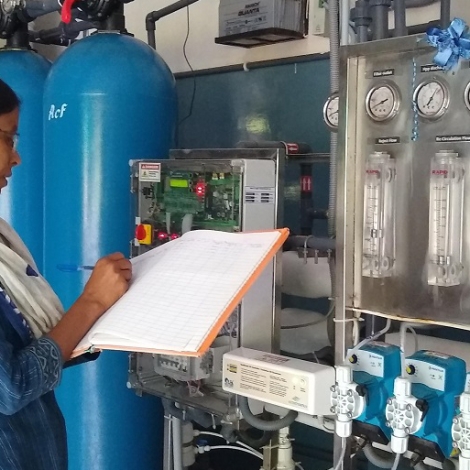Waterborne illness recently struck the Bajantri family in the Gobbur Wadi village in the Kamalapur taluk, Kalaburag district of India. Saibanna Bajantri passed at age 50 after three days of agony in the hospital, and his two daughters, Bheemabai and Jagadevi, recovered after hospitalization.
Twelve other people in the village suffered the same symptoms.
The Health Department intervened and tested the local water pipelines. Analysis of 16 of the water supplies found that 11 were contaminated.
Access to safe drinking water is a serious problem that affects some 200 million people every year in India, 90 million of whom die from complications. These alarming figures have prompted the Indian national government to action, ensuring that citizens can drink clean water.
The government has promoted the creation of small water companies to manage and operate plants locally. Safe Water Network India has integrated them, thus promoting more affordable systems for rural and remote communities. Some of these systems are based on remote monitoring using Internet-connected devices, also called the Internet of Things (IoT).
From E4C’s Solutions Library: Discover more remotely monitored water tech with Oxwater Smart Handpump
Ravindra Sewak, the Safe Water Network’s Country Director in India, presented the results of his work in remote monitoring of water infrastructure at World Water Week in September. According to the engineer, his equipment helps review performance and increases monitoring capabilities at pumping plants to ensure the availability of potable at all times, day or night.
“This IoT-based monitoring system translates into actionable intelligence and guarantees less than 2% downtime in a geographically dispersed rural water purification project,” Mr. Sewak says.
The technology includes a ducted chlorination line that can be installed in central supply piping, direct water supply to homes, and overhead tanks. It also employs robust sensors with performance and quality indicators. The sensors can measure residual chlorine, total dissolved solids (TDS), pH, turbidity, water flow and other metrics. In addition, the system’s housing has a control card, solar charger and a lithium battery to sustain its operation.
The system’s IT features include a GSM modem, cloud connectivity via a SIM card, autonomous data updating for automated dashboards and Telecom data transfer.
“The use of IoT-based remote monitoring system (RMS) helps increase transparency and minimize technical field staff. The latter is a key factor since these models are based in very dispersed areas and it is costly to maintain active professionals for the maintenance of all water supply sources,” Mr. Sewak says.
Another benefit of an IoT system like Mr. Sewak’s is the potential to gain deeper insight into consumer behavior. Connected sensors in a water delivery system can offer a more detailed analysis of the users’ needs, Mr. Sewak says.
Since its founding in 2006, the non-profit Safe Water Network has promoted access to clean water around the world. The organization has headquarters in the United States, India and Ghana. According to their data, the Safe Water Network has improved water access for thousands of underserved people and has empowered women by providing them with a source of employment.
About the Author
Claudia Alemañy Castilla is the 2022 Engineering for Change Editorial Fellow and an award-winning journalist who splits her time between homes in Cuba and Spain. Among her accomplishments, Ms. Alemañy Castilla has developed the COVID-19 Cuba Data Project for Juventud Técnica Magazine in Havana, Cuba, where she was a staff reporter specialized in science, technology and environmental journalism. She has also reported for Women in Science (a publication of País Vasco University), the Cuban Institute of Cultural Research ‘Juan Marinello,’ and others.

